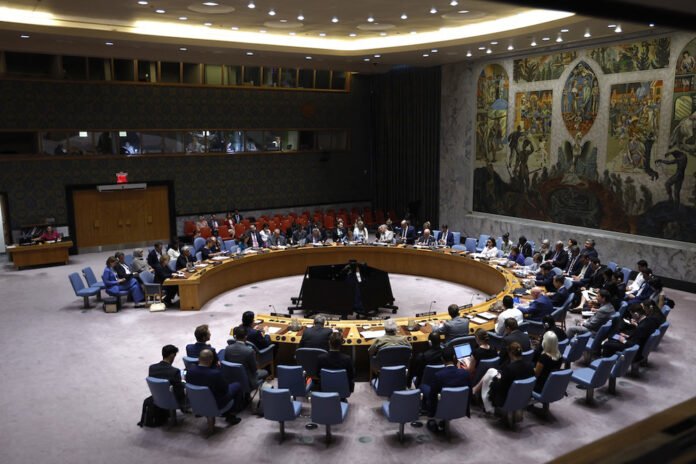The reimposition of United Nations sanctions on Iran this September has been described in Western capitals as a triumph of resolve. In practice, it reveals the fundamental ineffectiveness of diplomacy and the failure of coercion as a form of statecraft. Instead of diplomatically bringing Tehran to compliance, these actions will only end-up pushing Iran deeper into isolation and closer to China, in desperation. Granting China new levers of influence in the Middle East. Sanctions intended to punish may end-up empowering others.
Europe’s Last Resort
Britain, France, and Germany had recently activated the snapback provision of the Joint Comprehensive Plan of Action (JCPOA). They claimed that Iran was severely violating its pledges as it had hoarded over 400 kilograms of enriched uranium, had resolved to enrich upto sixty per cent and refused to allow inspectors of the International Atomic Energy Agency (IAEA) to inspect its facilities. The European move was not simply about non-compliance; it was also about timing. The snapback authority was due to expire in October. By acting when they did, the Europeans ensured that they retained one last tool of leverage before the legal window closed.
Having already lost much of their influence in Tehran after American withdrawal from the nuclear deal in 2018, the Europeans acted to salvage their relevance. They succeeded in triggering sanctions, but failed in building any bridge leading back to negotiations
Once the mechanism was invoked, the process became automatic. Unless the Security Council passed a resolution to halt it, which was impossible, given American and European vetoes, the entire suite of sanctions lifted in 2015 returned. That included arms embargoes, and restrictions on missile technology and financial prohibitions that had crippled Iran’s economy in the past. For Europe, this was a gamble. Having already lost much of their influence in Tehran after American withdrawal from the nuclear deal in 2018, the Europeans acted in order to salvage their relevance. They succeeded in triggering sanctions, but failed in building any bridge leading back to negotiations.
Tehran’s Defiance
Iran dismissed the move as illegal and baseless. President Masoud Pezeshkian, already weakened by the June war with Israel and American airstrikes on nuclear facilities at Fordow, Isfahan and Natanz, framed the sanctions as an existential assault. “They want to topple us,” he told reporters in New York. His words were designed for domestic audiences as much as for foreign ears. Hardliners and clerics within Iran demanded an exit from the Nuclear Non-Proliferation Treaty (NPT), while the moderates were apprehensive of the global fallout, yet the nation was in anger.
For ordinary Iranians, the sanctions are not an abstract diplomatic measure. They translate into higher food prices, fewer jobs and declining purchasing power. Inflation has hovered above forty per cent, the currency continues to collapse on the black market, and water and electricity shortages have become routine. Small and medium enterprises, which employ half of Iran’s industrial workforce, face impossible conditions as imports are cut off and banking restrictions deepen.
The logic of sanctions rests on the assumption that economic pain translates into political compliance. That assumption has rarely held. Iraq was a reminder when sanctions impoverished civilians but failed to dislodge Saddam Hussein or curb his regional ambitions. Iran is no different. Sanctions have disrupted growth and deepened corruption, but have not forced capitulation. Instead, they have encouraged Tehran to adapt through informal trade networks and alternative partnerships
The Illusion of Pressure
The logic of sanctions rests on the assumption that economic pain translates into political compliance. That assumption has rarely held. Iraq was a reminder when sanctions impoverished civilians but failed to dislodge Saddam Hussein or curb his regional ambitions. Iran is no different. Sanctions have disrupted growth and deepened corruption, but have not forced capitulation. Instead, they have encouraged Tehran to adapt through informal trade networks and alternative partnerships.
The most important of those partnerships is with China. More than ninety per cent of Iran’s oil exports already flow to Chinese buyers. Snapback sanctions do not stop this trade. They simply discount it, providing Beijing with cheaper energy and greater leverage. For Washington and its European allies, this is the great unintended consequence. In trying to punish Tehran, they hand Beijing a strategic advantage.
Beijing’s Calculus
In Chinese strategic circles, the language is telling. Scholars describe Iran as weak but useful, fragile but dependent. Snapback sanctions reinforce that dependence. Beijing gains reliable energy at reduced prices, quiet influence in Gulf diplomacy, and a tethered partner too isolated to look westward. Managed weakness is the preferred outcome. China does not want a collapsed Iran that would create chaos across the Gulf. Nor does it want a strong Iran that could act independently. It wants a regime just stable enough to sell oil but too vulnerable to shift allegiances.
This is why Chinese policymakers publicly denounce sanctions while privately acknowledging their benefits. They know that every new measure from Washington or Brussels tightens Tehran’s reliance on Beijing. They also know that so long as Iran’s enrichment stops short of weaponisation, the arrangement is manageable. A nuclear-armed Iran would be destabilising, potentially dragging China into crises it prefers to avoid. But a sanctioned Iran that enriches just below the threshold is a perfect balance. Oil flows, influence grows, and risk remains contained.
The Europeans have argued that snapback was necessary to preserve the non-proliferation regime. Yet their move has hardened opposition from Moscow and Beijing. Moscow benefits from Iranian isolation, drawing on Tehran’s support in Ukraine, while defying Western sanctions of its own. In this sense, Iran becomes another arena of the broader East–West confrontation
America’s Dilemma
The United States insists that sanctions are necessary to prevent a nuclear Iran. It has no appetite for another Middle Eastern war and no trust in Tehran’s promises. Yet the reliance on economic punishment alone is a blunt instrument. Every additional round of sanctions deepens Iran’s defiance and accelerates its eastward pivot. Washington is fighting today’s battles with yesterday’s tools. The sanctions architecture that once isolated adversaries now creates new alignments.
American policymakers should take note of the fact that coercion in the absence of engagement seldom yields strategic outcomes. However imperfect the JCPOA was, it proved the possibility of negotiated constraints to be effective, provided they were supported by verification. The collapse of that framework left only pressure, and pressure alone has not stopped enrichment. It has only changed the balance of who benefits.
Europe’s Gamble, Moscow’s Resistance
The Europeans have argued that snapback was necessary to preserve the non-proliferation regime. Yet their move has hardened opposition from Moscow and Beijing. Russia has already denounced the sanctions as illegitimate and will continue military and economic cooperation with Tehran, particularly in drone technology. Moscow also benefits from Iranian isolation, drawing on Tehran’s support in Ukraine, while defying Western sanctions of its own. In this sense, Iran becomes another arena of the broader East–West confrontation.
The larger lesson is that sanctions have become a default tool of Western policy without delivering lasting results. They punish populations more than governments. They encourage defiance rather than compliance. And they open the door for rivals to profit. China understands this and has positioned itself to reap the dividends
Iran’s Options
For Tehran, the choices are grim. Withdrawing from the NPT, while the choice remains, the consequences could be more severe. Endurance rather than escalation is the likely path. Iran will continue to resist inspections selectively, enrich just short of weaponisation, and rely on China as its lifeline.
Domestic costs will rise. Public anger is already mounting. Yet the Iranian system has weathered sanctions before without a national crisis. However, sanctions would impact citizens and hollow out the economy.
Sanctions as Strategic Dead Ends
The larger lesson is that sanctions have become a default tool of Western policy without delivering lasting results. They punish populations more than governments. They encourage defiance rather than compliance. And they open the door for rivals to profit. China understands this and has positioned itself to reap the dividends.
If history is any guide, the snapback sanctions of 2025 will delay but not derail Iran’s nuclear ambitions. They will weaken but not collapse the regime. They will isolate Iran from Europe and America while binding it more tightly to China. In the attempt to contain one adversary, the West may be strengthening another. By relying on sanctions as the sole instrument of policy, the West has once again chosen punishment without strategy. History suggests such choices rarely end well.
The author, a PVSM, AVSM, VSM has had an illustrious career spanning nearly four decades. A distinguished Armoured Corps officer, he has served in various prestigious staff and command appointments including Commander Independent Armoured Brigade, ADG PP, GOC Armoured Division and GOC Strike 1. The officer retired as DG Mechanised Forces in December 2017 during which he was the architect to initiate process for reintroduction of Light Tank and Chairman on the study on C5ISR for Indian Army. Subsequently he was Consultant MoD/OFB from 2018 to 2020. He is also a reputed defence analyst, a motivational speaker and prolific writer on matters of military, defence technology and national security. The views expressed are personal and do not necessarily carry the views of Raksha Anirveda






